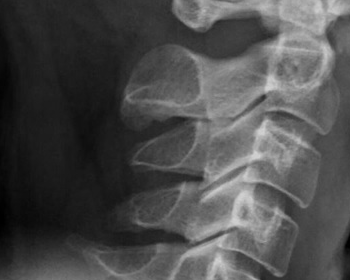What is Cervical Calcification?
Calcification occurs when calcium accumulates in cells, arteries, or organs. This accumulation often hardens and disturbs the body’s natural functions. Calcium circulates through the bloodstream. This substance is also present in every living cell. Calcification can therefore present in practically every area of the body. Calcification is a form of intervertebral disc degeneration that most commonly affects the cervical portion of the spine.
Von Luschka originally noted intervertebral disc calcification in 1858, and Beneke used x-rays on corpses to show it in 1897. The first description of disc calcification in a living person dates back to 1922, due to Calvé and Galland.
There are 24 vertebrae in the spine as a whole. The spinal cord and nerves go through a hole in the vertebral column as a whole. The brain, spinal cord, and nerves all work together to carry signals to and from the body’s muscles, organs, and other locations. There are discs in between each set of vertebrae. The discs function similarly to the body’s shock absorbers.
Disc calcification is typically accompanied by significant indications and symptoms in children, particularly in the cervical spine. In instances of cervical disc calcification, the natural history reported symptoms, and physical and x-ray findings are all very similar. This suggests that this condition must be treated as its clinical entity.
Cervical Calcification Symptoms
Cervical calcification is generally asymptomatic. Calcium deposits are more commonly found on X-rays, such as mammograms, and thus are more readily detected by medical professionals.
The patient mostly experiences the impacts of the underlying condition or process that causes calcification. Cervical calcification is frequently the result of an untreated problem of mineral metabolism, which occurs when the body is unable to make use of calcium.
Some of the possible signs of cervical calcification are as follows:
- Bone spurs, which occasionally protrude through the skin as lumps.
- Breast mass or lump.
- Visual impairment, eye irritation, or dryness.
- Impact on growth.
- An increase in bone fractures.
- Muscle weakness or cramps.
- Some variations in bone structure, such as leg bending or spine curvature.
- Progressively becoming weak.
- Tartar on the teeth.
- Bone ache.
Cervical Calcification Causes
Dystrophic calcification refers to calcification that occurs as a result of cell death or as part of the healing process. When cells are damaged, they release calcium.
Additionally, it can be caused by infection, inflammation, tumors, trauma, and previous surgery. It can also be caused by very excessive amounts of blood calcium, known as hypercalcemia. In this instance, calcifications develop around the blood vessels or in the tissues that surround them.
There are some other potential causes of calcification, such as:
- Disorders of calcium metabolism that lead to hypercalcemia.
- Genetic or autoimmune diseases.
- Infection.
- Chronic inflammation.
Spinal ligaments tend to stiffen and thicken as people get older (called calcification). Bones and joints can also get bigger, and bone spurs can form. Disc injuries including bulging and herniation are also frequent. Compression also results from spondylolisthesis, which is when one vertebra slides over another.
Cervical Calcification Treatment
Calcification is currently not curable or reversible in most cases. But disorders that are caused by or related to calcification are often easy to treat. Treatment options differ according to the illness.
Doctors typically use oral colchicine, glucocorticoid injections, and NSAIDs to address any pain and underlying inflammation because there is no known way to eliminate calcium deposits from the cartilage of the joints. For certain people who suffer from this problem, medical professionals often recommend surgical treatment. Treatment options also include conservative care, such as the use of nonsteroidal anti-inflammatory drugs (NSAIDs) or cortisone. The cervical yellow ligament calcification can be treated safely and effectively with surgery, though.
 Health & Care Information
Health & Care Information



